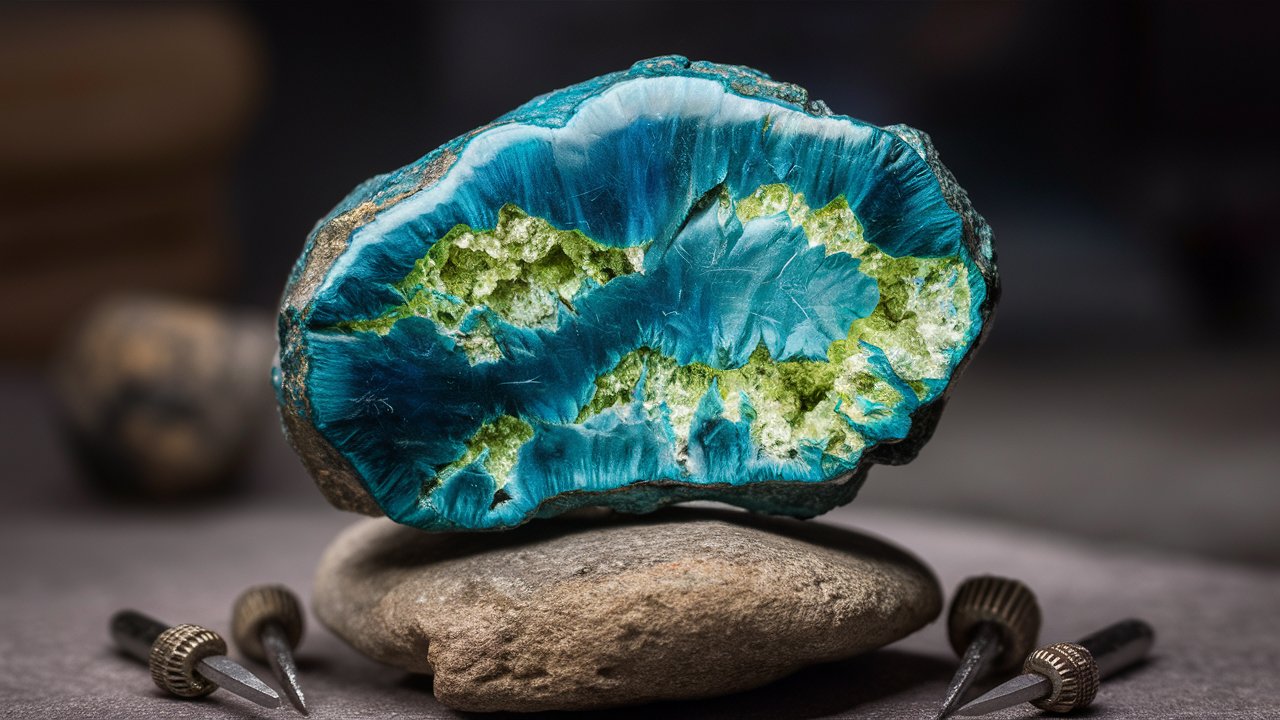
Aeschynite-(Y) is a rare mineral that often intrigues collectors and geologists alike. Found primarily in granite pegmatites, this mineral is known for its unique composition and striking appearance. But what exactly makes Aeschynite-(Y) so special? For starters, it contains a mix of rare earth elements like yttrium, niobium, and titanium. These elements contribute to its distinct yellow-brown to black color. Did you know that Aeschynite-(Y) can also be slightly radioactive? This adds another layer of fascination for those studying it. Whether you're a budding geologist or just curious about rare minerals, learning about Aeschynite-(Y) can be both educational and exciting. Let's dive into 15 intriguing facts about this captivating mineral!
What is Aeschynite-(Y)?
Aeschynite-(Y) is a rare mineral that belongs to the aeschynite group. It contains elements like yttrium, titanium, and niobium. This mineral is often found in granitic pegmatites and is known for its unique properties.
-
Aeschynite-(Y) contains yttrium, a rare earth element used in various high-tech applications, including lasers and superconductors.
-
The mineral's name comes from the Greek word "aeschyne," meaning "shame" or "disgrace." This name was chosen because the mineral was initially mistaken for another, more common mineral.
Where Can You Find Aeschynite-(Y)?
Aeschynite-(Y) is not found everywhere. Its occurrence is limited to specific geological environments, making it a prized find for mineral collectors.
-
Aeschynite-(Y) is typically found in granitic pegmatites, which are igneous rocks with exceptionally large crystals.
-
Notable locations include Norway, Canada, and the United States. These countries have some of the most well-known deposits of this rare mineral.
Physical Properties of Aeschynite-(Y)
Understanding the physical properties of Aeschynite-(Y) can help in identifying and studying this mineral.
-
Aeschynite-(Y) has a hardness of 5 to 6 on the Mohs scale, making it relatively hard but not as hard as quartz.
-
The mineral exhibits a submetallic to resinous luster, giving it a somewhat shiny appearance.
-
Its color ranges from brown to black, depending on the specific composition and impurities present.
Chemical Composition of Aeschynite-(Y)
The chemical makeup of Aeschynite-(Y) is what sets it apart from other minerals.
-
Aeschynite-(Y) contains yttrium, titanium, and niobium, along with other elements like iron and calcium.
-
The formula for Aeschynite-(Y) is (Y,Ca,Fe)(Ti,Nb)2(O,OH)6, reflecting its complex composition.
Uses and Applications
While not commonly used in everyday applications, Aeschynite-(Y) has some specialized uses.
-
Aeschynite-(Y) is studied for its yttrium content, which is valuable in high-tech industries.
-
The mineral is also of interest to collectors and researchers, who study its properties and formation.
Interesting Facts About Aeschynite-(Y)
There are some lesser-known but fascinating aspects of Aeschynite-(Y) that make it even more intriguing.
-
Aeschynite-(Y) can be radioactive, due to the presence of thorium and uranium in some specimens.
-
The mineral often forms in association with other rare earth minerals, making it a key indicator of valuable geological environments.
-
Aeschynite-(Y) was first described in 1828, making it a mineral with a long history of scientific study.
-
Despite its rarity, Aeschynite-(Y) has been found in meteorites, suggesting it has extraterrestrial origins as well.
The Final Word on Aeschynite-(Y)
Aeschynite-(Y) stands out as a fascinating mineral with its unique properties and intriguing history. Found in rare geological environments, this mineral is a treasure for collectors and scientists alike. Its composition, rich in rare earth elements, makes it significant for various industrial applications. The mineral's striking appearance, often showcasing a range of colors from yellow to brown, adds to its allure.
Understanding Aeschynite-(Y) not only enriches our knowledge of mineralogy but also highlights the importance of preserving rare geological sites. Whether you're a seasoned geologist or just a curious mind, the facts about Aeschynite-(Y) offer a glimpse into the complex and beautiful world of minerals. Keep exploring and appreciating these natural wonders, as they hold the keys to many scientific and industrial advancements.
Was this page helpful?
Our commitment to delivering trustworthy and engaging content is at the heart of what we do. Each fact on our site is contributed by real users like you, bringing a wealth of diverse insights and information. To ensure the highest standards of accuracy and reliability, our dedicated editors meticulously review each submission. This process guarantees that the facts we share are not only fascinating but also credible. Trust in our commitment to quality and authenticity as you explore and learn with us.


